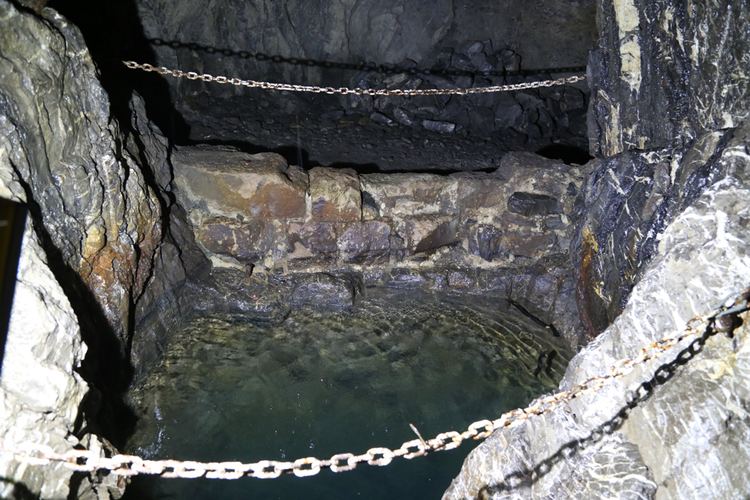 | ||
A flooded mine is one of the direct results of a mine's closure procedure. When a mine stops to operate, its maintenance systems also stop, in which the dewatering systems are included. Without these systems the mine will get flooded by water.
Contents
Overview
Mining operations can occur during a long period of time (from several years to several decades) and in order to keep the mining operations running, water has to be constantly removed from the mine sites, when needed. After the mine is closed, which happens when its operational life ends, the maintenance systems stop. Also, the dewatering systems stop to operate. Without any kind of work towards dewatering, the closed mines tend to get flooded with surface and groundwaters in the lower levels and mined spaces, if there is not a drainage adit present. The flooding process of an open-pit or underground mine can take from a several months period to more than a decade. The time it takes for a mine to get flooded depends on factors such as quantity of open space in the mine, availability of infiltration water and on the nature of flooding - it can be uncontrolled, controlled or monitored.
Open pit mines
Flooding in open pit mines leads to the so-called pit lakes, where a wide range of creatures can be seen. The flooding process happens because the drainage wells or dewatering pumps stop to work and the open mining spaces are filled with groundwaters and surface waters. Surface waters come from precipitation and water bodies (e.g. rivers) and groundwaters come from bodies connected to the pit or from abandoned underground mine workings.
Waters that flood open pit mines can range from drinking water quality to acidic waters, that can kill animals if drank.
Underground mines
Flooding in underground mines is usually controlled. This type of mines are not directly influenced by surface waters, so it is mainly underground water that plays a role in the flooding. One of the main reasons to let an underground mine be flooded is to avoid disulfide oxidation and thus, avoid acid mine drainage. Other important reason is safety: people coming to underground mines without safety precautions or the presence of dangerous mine gases.
The controlled flooding of underground mines usually follows these guidelines:
Reasons for mine flooding
There are a wide range of factors that leads to mine flooding. Six of those main reasons are:
